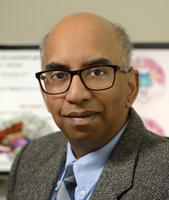Research
Computational Anatomy
We are interested in quantifying shapes of anatomical structures at multiple scales. It is important to localize differences in structures in disease such as schizophrenia, auditory disorders, depression, ADHD, autism, dementia, aphasia, Huntington's Diseae to name but a few. In the Grenander deformable template framework we map specific structures to a template via infinite dimensional large deformation diffeomorphisms. These maps ensure that statistical analysis can be reliably performed in the template coordinates (see our metric pattern theory online course). Currently we are examining shape changes and where appropriate cortical thickness in hippocampus, entorhinal cortex, amygdala, superior temporal gyrus (including primary auditory cortex and planum temporale), thalamus, prefrontal cortex and cingulate gyrus. We are also interested in examining properties of white matter fiber tracts connecting specific regions via global optimal paths.
Auditory physiology
The exquisite architecture of the mammalian cochlea continues to challenge scientists, engineers and clinicians. Mathematical modeling has played an important role in understanding the intricate micromechanics of the cochlear outer hair cell which is believed to be essential for mammalian hearing.
Boundary layer separation
The 20th century saw the evolution of mathematical methods for understanding boundary layer separation from Prandtl's seminal discovery in 1904 to the application of matched asymptotic expansion methods including triple deck theory from the 1970s onwards by Stewartson, Brown, Smith, Daniels, Cowley and colleagues. These analytical methods can still be very illuminating without solving Navier-Stokes equations on supercomputers!
Computational fluid dynamics and numerical analysis
Precise methods are required for generating diffeomorphisms in Computational Anatomy as well as simulating micro- and nano- fluid flows in auditory physiology. So we need to apply computational methods developed or originating in Computational Fluid Dynamics and Numerical Analsysis. In particular we are interested in symplectic methods for solving Hamiltonian systems associated with EPDiff equation in Computational Anatomy.
SpeechBanana - Mobile and web applications for auditory training
The red text below is the present day modification of the first paragraph of the preface to Whitehurst’s aptly titled book “Train Your Hearing” which was published by the Volta Bureau (as AGBell was then called) in 1947 and preceded the “Auditory Training for the Deaf” book, also published by the Volta Bureau in 1952 and used as the basis for the SpeechBanana app. Lined text emphasizes that “plus ça change, plus c'est la même chose”.
The purpose of this book app is to outline provide a method of self-training which, if followed, will may help re-educate one's residual hearing with a cochlear implant or a new hearing aid. The author app does not consider self-training the most effective approach to the problem. In all rehabilitation work personal contacts between teacher therapist and pupil are desirable. Such personal contacts, however, are not always possible; certainly not under existing conditions in the field of auditory training. The field is new has been expanding rapidly in the past decade and yet at present the number of trained teachers therapists is few. On the other hand, the hard of hearing persons who could benefit from intensive training are legion. Individual home study with the app seems to be the only a potentially viable solution for those who cannot work under a competent instructor.
